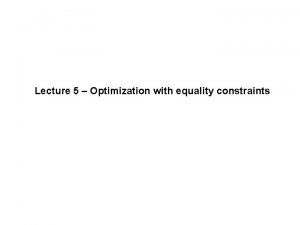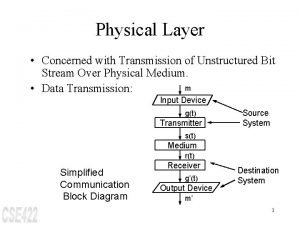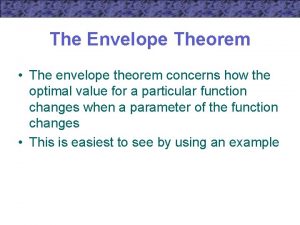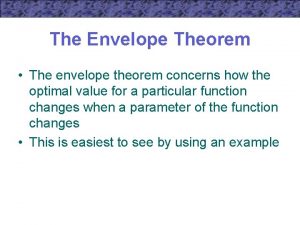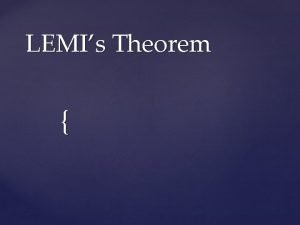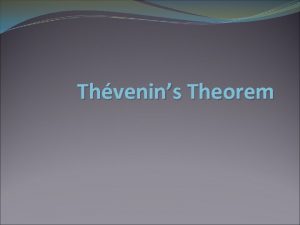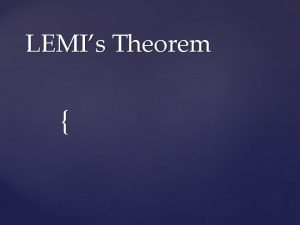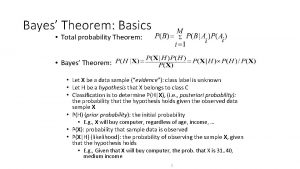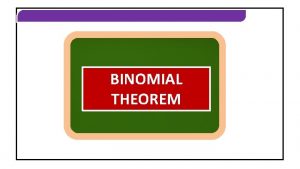The Envelope Theorem The envelope theorem concerns how













- Slides: 13

The Envelope Theorem • The envelope theorem concerns how the optimal value for a particular function changes when a parameter of the function changes • This is easiest to see by using an example

The Envelope Theorem • Suppose that y is a function of x y = -x 2 + ax • For different values of a, this function represents a family of inverted parabolas • If a is assigned a value, then y becomes a function of x only and the value of x that maximizes y can be calculated

The Envelope Theorem Optimal Values of x and y for alternative values of a

The Envelope Theorem As a increases, the maximal value for y (y*) increases The relationship between a and y is quadratic

The Envelope Theorem • Suppose we are interested in how y* changes as a changes • There are two ways we can do this – calculate the slope of y directly – hold x constant at its optimal value and calculate y/ a directly

The Envelope Theorem • To calculate the slope of the function, we must solve for the optimal value of x for any value of a dy/dx = -2 x + a = 0 x* = a/2 • Substituting, we get y* = -(x*)2 + a(x*) = -(a/2)2 + a(a/2) y* = -a 2/4 + a 2/2 = a 2/4

The Envelope Theorem • Therefore, dy*/da = 2 a/4 = a/2 = x* • But, we can save time by using the envelope theorem – For small changes in a, dy*/da can be computed by holding x at x* and calculating y/ a directly from y

The Envelope Theorem y/ a = x Holding x = x* y/ a = x* = a/2 This is the same result found earlier.

The Envelope Theorem • The envelope theorem states that the change in the optimal value of a function with respect to a parameter of that function can be found by partially differentiating the objective function while holding x (or several x’s) at its optimal value

The Envelope Theorem • The envelope theorem can be extended to the case where y is a function of several variables y = f(x 1, …xn, a) • Finding an optimal value for y would consist of solving n first-order equations y/ xi = 0 (i = 1, …, n)

The Envelope Theorem • Optimal values for theses x’s would be determined that are a function of a x 1* = x 1*(a) x 2* = x 2*(a). . . xn*= xn*(a)

The Envelope Theorem • Substituting into the original objective function yields an expression for the optimal value of y (y*) y* = f [x 1*(a), x 2*(a), …, xn*(a), a] • Differentiating yields

The Envelope Theorem • Because of first-order conditions, all terms except f/ a are equal to zero if the x’s are at their optimal values • Therefore,
 What is envelope theorem
What is envelope theorem Stokes theorem example problems
Stokes theorem example problems Product vs process layout
Product vs process layout Matzas
Matzas Where has macduff gone and why
Where has macduff gone and why Escalating concerns in nursing
Escalating concerns in nursing Product +concerns
Product +concerns The physical layer concerns with
The physical layer concerns with Joys and concerns
Joys and concerns Dr smith
Dr smith Network layer design issues
Network layer design issues When a choice concerns matters of personal value or taste
When a choice concerns matters of personal value or taste Gianna beretta molla maria zita molla
Gianna beretta molla maria zita molla Macmillan concerns checklist
Macmillan concerns checklist
